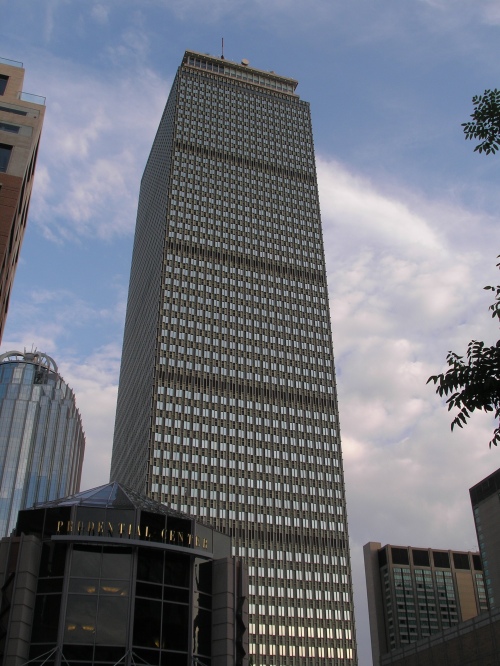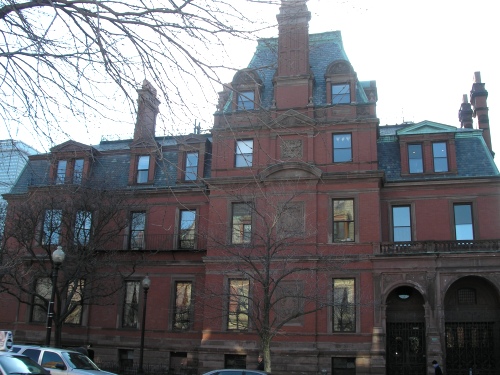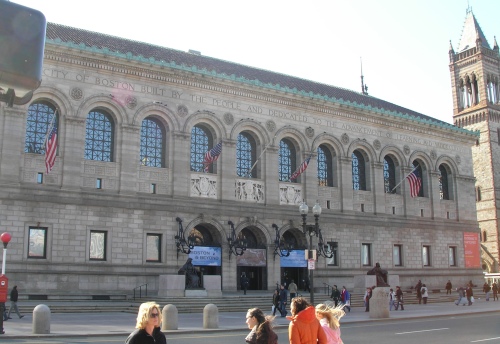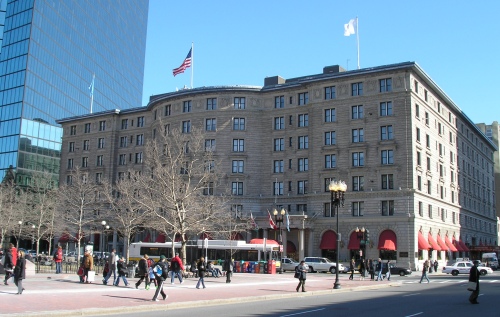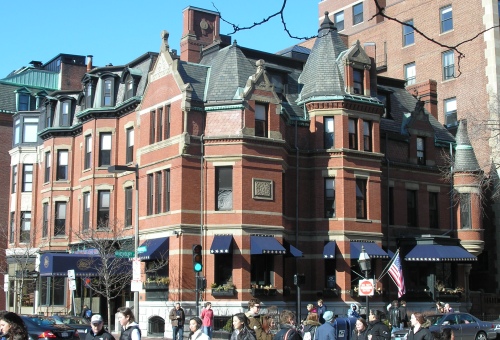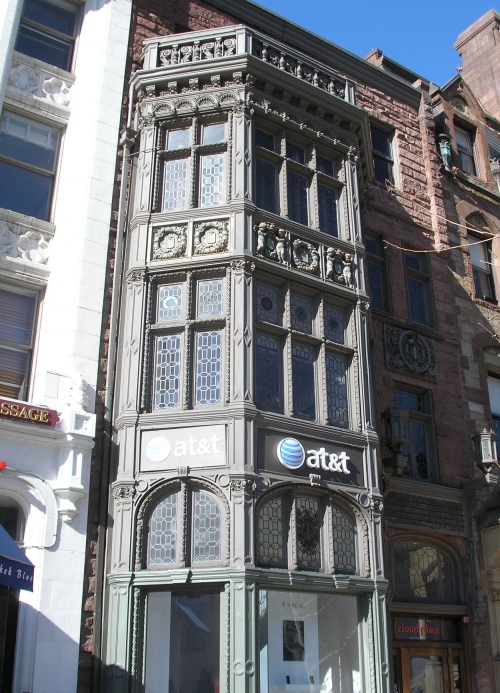326-328 Dartmouth Street, Boston (1871)
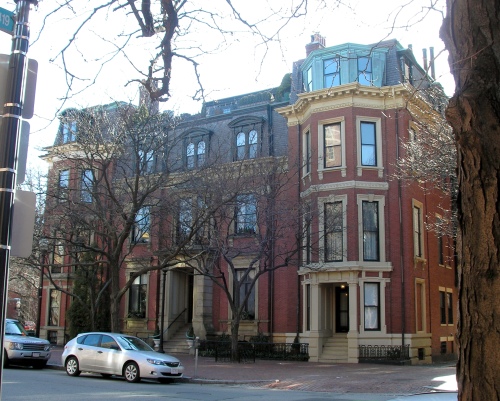
The Cushing-Endicott House, at 163 Marlborough Street in Boston, is considered one of the Back Bay‘s greatest architectural achievements. Designed in the French Academic Style, it was built in 1871 of brick, with Nova Scotia sandstone trim, for Thomas F. Cushing by the firm of Snell and Gregerson. The house later served as the home of William C. Endicott, secretary of war under President Grover Cleveland. In 1903, John Singer Sargent used one of the bedrooms as his studio. The house is now divided into condominiums. The house is joined to two neighboring houses, one with an interesting T-shape interior plan, which are located around the corner at 326–328 Dartmouth Street and have a similar architectural style.
